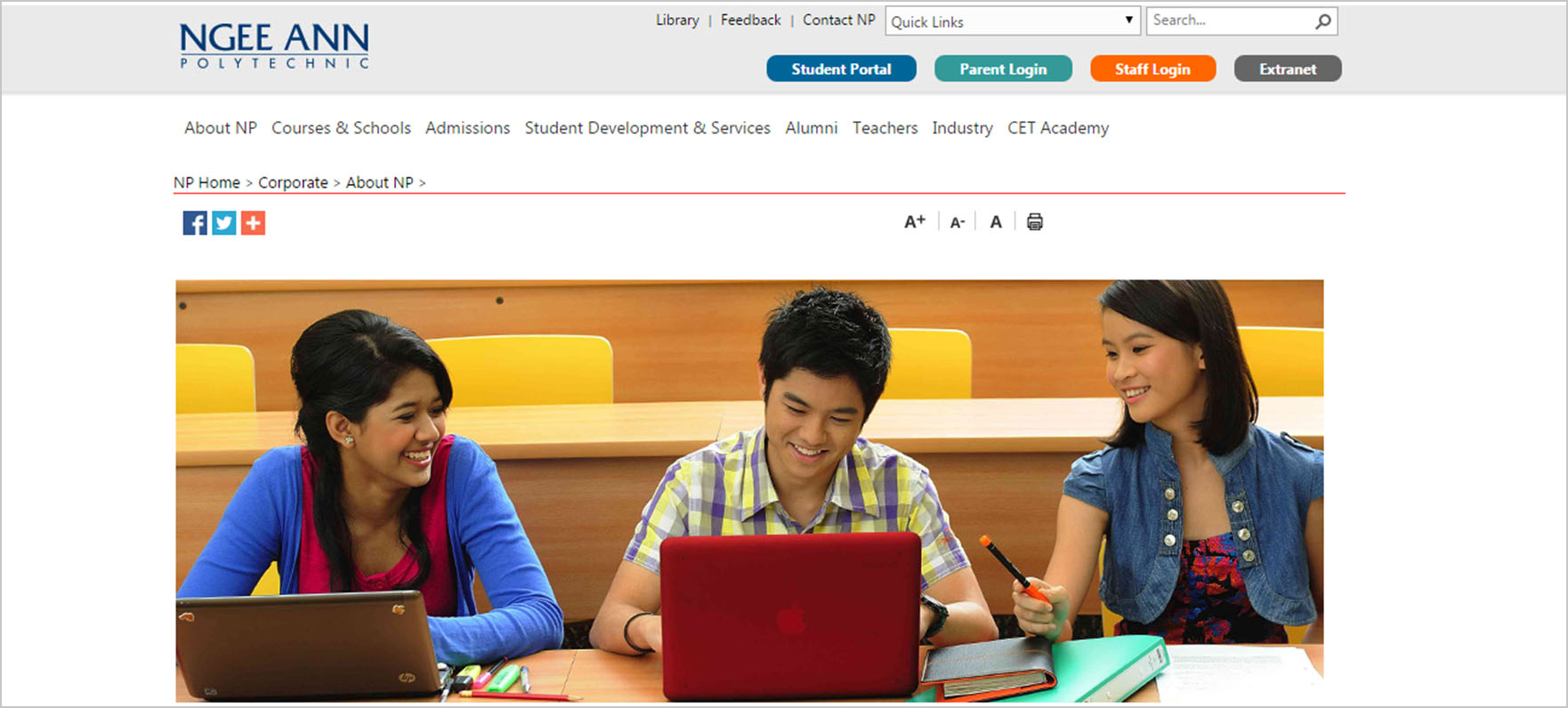Ngee Ann Polytechnic students get hands-on analytics experience with Tableau
The Diploma in Business Information Technology, offered under Ngee Ann Polytechnic’s School of Business & Accountancy, has a strong focus in business analytics. The course is designed to equip students with essential business knowledge, and a good grasp of accounting and economics concepts. Students also learn about information processing and design, data analytics, mobile applications and database systems.

Ngee Ann Polytechnic describes their students as "passionate learners, big-hearted, and global-smart."
To better engage students and introduce business analytics in a more lively and relevant manner, Jamie Teo, Senior Lecturer at Ngee Ann Polytechnic’s School of Business & Accountancy, has adopted Tableau as a classroom tool. She believes Tableau is ideal for her students as it provides a simple introduction to data analytics for beginners. She wants to offer her students practical experience in data analytics and visualization. Tableau’s easy-to-use features have also changed the way her course is structured, as it now allows students to have a more hands-on approach to analysis.
Introducing students to data
Jamie and her fellow instructors at Ngee Ann Polytechnic realize that it is crucial for their students to get a good grasp of data analytics early as there is a growing demand for talents with data analytic skills across industries. They also know that they have to make their data analytics classes interesting to keep students engaged. At the same time, students need to be able to gain real-world data analytics skills that they can use in the workplace.
However, the team faced some difficulties when they first started the business analytics module. The analytics tools were complex and not suitable for classroom use. Some tools also had incompatibility issues with students’ computers, hindering the teaching process.
This meant that 80 percent of the lessons were theory-based, and the instructors had to rely on case studies to explain concepts in business analytics. Students got limited hands-on experience and insufficient practical exposure to data analytics tools.
Tableau as a teaching tool
We noticed that our students are more confident in analyzing data sets. Their ability to grasp theoretical concepts on OLAP has also improved because they can relate it to the user interface of the Tableau Desktop.

Ngee Ann Polytechnic serves over 16,000 students on its campus in central Singapore.
In 2010, Jamie learned about Tableau through Gartner’s Magic Quadrant. She downloaded the free trial and familiarized herself with the software using the many online resources available on the Tableau website. Through these, she found Tableau easy to learn and quite suitable for the Business Analytics module that she was teaching.
The fact that Tableau offered free licensing for academic use was a huge draw for Jamie. Another reason was that Tableau can be installed directly onto a desktop computer without any need for additional hardware or software.
She felt that Tableau’s intuitive design and drag-and-drop usability allow students to work with data with confidence. Furthermore, the rich learning resources and sample dashboards available on Tableau’s website can be used immediately in the classroom.
Positive feedback from students
Currently, students in Jamie’s classes learn to use Tableau Desktop. They form project groups and use Tableau to analyze data from www.data.gov.sg, a portal that provides access to publicly available data published by the Singapore Government. Each group is tasked to create dashboards that can help to answer a business question or highlight a business opportunity working with a selected dataset from the site.
Jamie said: “We have been able to adjust the syllabus to allow for a more practical approach using Tableau as it is easy to use and understand. Since introducing our students to Tableau, we have noticed that they are more confident in analyzing data sets. Their ability to grasp theoretical concepts on Online Analytical Processing (OLAP) has also improved as they can now relate them to the user interface of Tableau Desktop.”
"We have gotten requests from students asking for more lessons to help them deepen their skills in Tableau, as they see it as an essential tool for careers in data analytics."
According to feedback, students find Tableau fun and easy to use. They like the fact that Tableau allows them to explore the many ways in which data can be mined, analyzed, and understood. Most feel that the analytics skills they have acquired from using Tableau will be relevant and useful in their careers in the future.
“The students have also said that they see the importance of visualizations in helping them understand large amounts of data. In fact, we have gotten requests from students asking for more lessons to help them deepen their skills in Tableau software, as they see it as an essential tool for careers in data analytics,” she added.
Growing interest in data
With growing interest in data analytics, Ngee Ann has further extended the Business Analytics module to students in the Diploma in Business Studies course, making it possible for these business students to get an early exposure to data analytics. The module has been made available to over 500 students for the 2015 academic year. This is more than double the number in 2014. The number of teaching staff has also increased to cater to the rise in number of students taking the module.
Finally, Jamie recommends Tableau to aspiring data analysts and students. She suggests that first-time users make full use of the readily available online resources on the Tableau website. She believes that anyone will be able to learn how to use the software as its design is intuitive, and there are many helpful and readily available tutorials online.